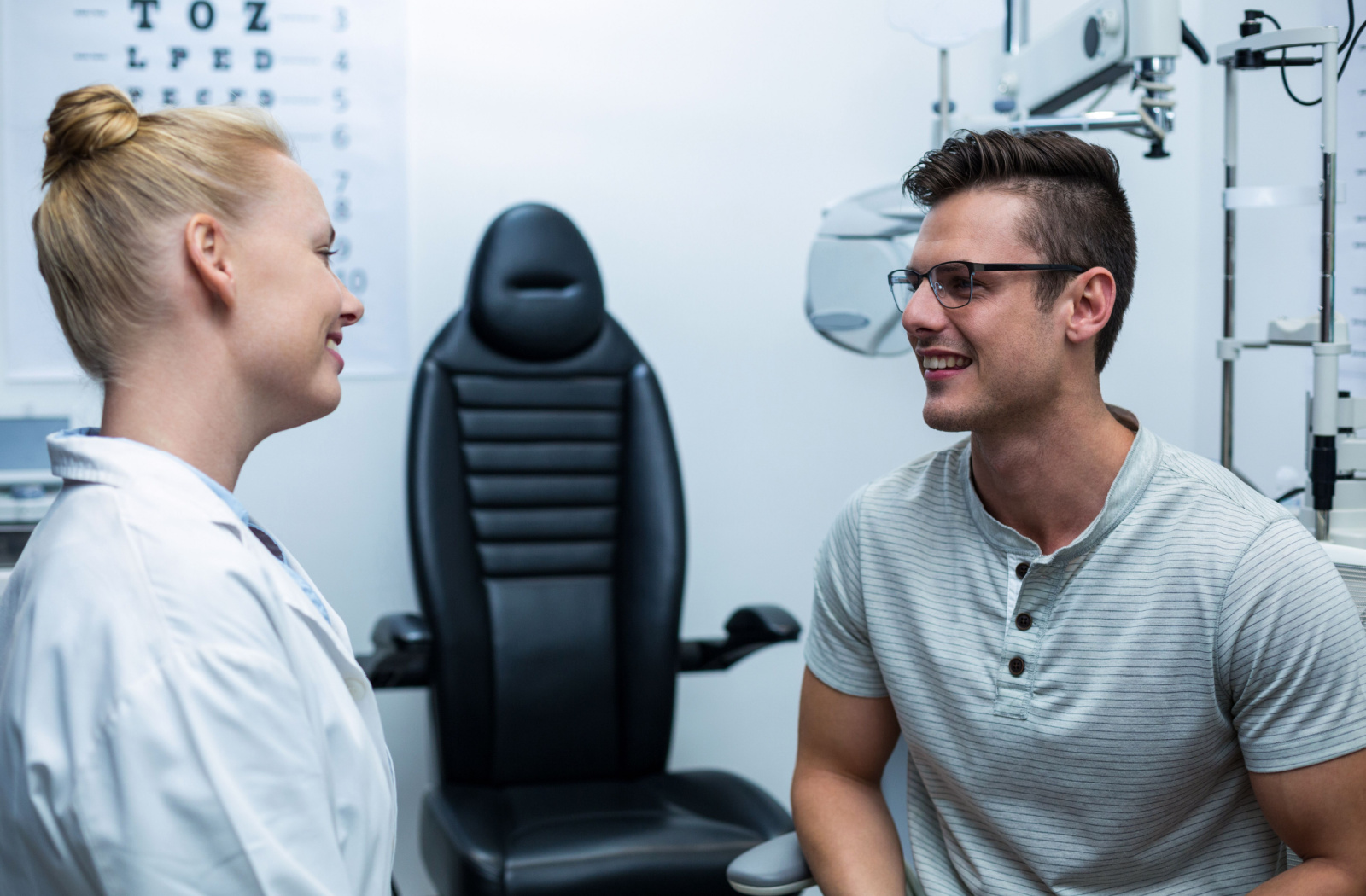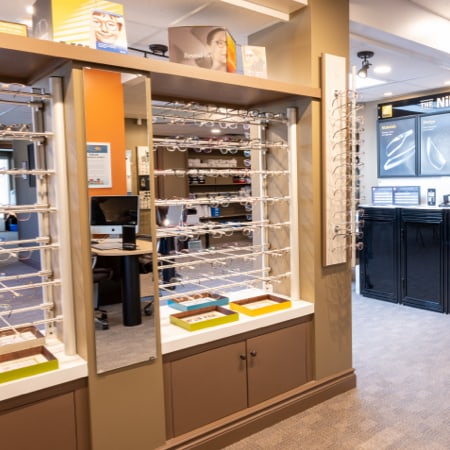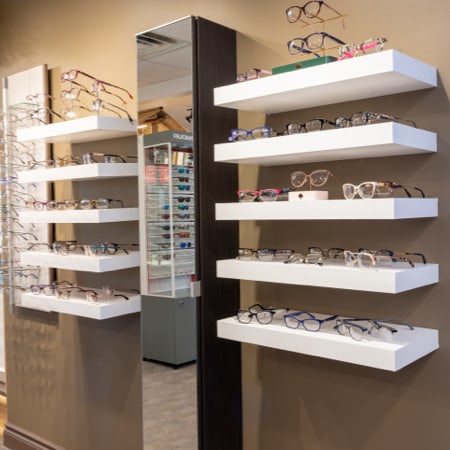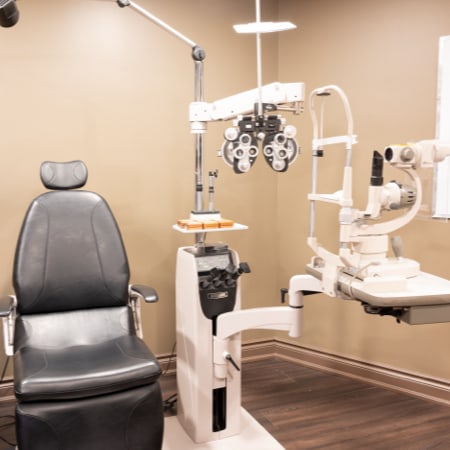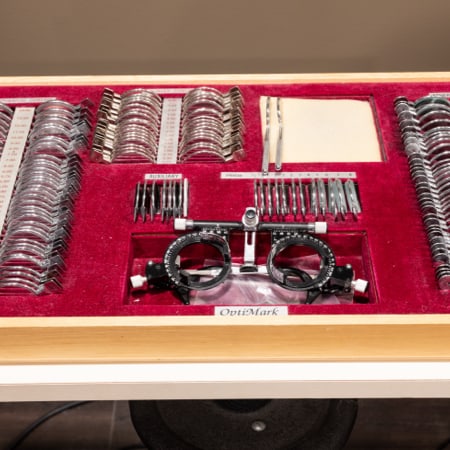Taking care of your eyes is important, and part of that involves regular eye exams. But how often should you get an eye exam?
Adults and seniors should have an eye exam every 12 to 24 months. Preschool children should have one eye exam between 2 and 5 years, and school-aged children should have annual eye exams from 6 to 19 years.
A comprehensive eye exam is essential for detecting potential eye problems and maintaining good vision. Once you visit your eye doctor for an assessment, they will recommend a frequency based on your needs.
Importance of Eye Exams for Eye Health
Obtaining the right prescription for glasses or contact lenses is undoubtedly one aspect of visiting your eye doctor for an eye exam. However, that’s not all. Regular eye exams help detect and address several underlying eye conditions and diseases that might go unnoticed because they don’t always present early warning signs or symptoms.
From identifying early signs of eye diseases to uncovering issues like dry eye or digital eye strain in our screen-centric age, eye exams are a comprehensive tool for preventative care. Think of eye exams as a holistic checkup for your eyes, where your eye doctor will check your vision, screen for common eye conditions, and assess the health of your eyes.
Adult Eye Exams
According to the Canadian Association of Optometrists, adults aged 20 to 64 should have an eye exam at least every 2 years. However, you may need to visit your eye doctor more frequently, once a year, if you have a family history of eye diseases or other medical conditions.
Around age 40, you may be at an increased risk of age-related vision changes, such as presbyopia. Presbyopia is the gradual loss of near-vision and can cause the following symptoms:
- Headaches
- Blurred vision
- Sore eyes
- The need for more light
Seniors 65 and older should have an eye exam at least every year because they are at a higher risk of developing low vision and vision problems, such as the following:
- Cataracts: Clouding of the eye’s lens that obscures vision.
- Diabetic retinopathy: Uncontrolled sugar levels cause damage to the blood vessels in the back of the eye and lead to vision changes.
- Age-related macular degeneration: Degenerative changes to the macula at the back of the eye affect central vision and later vision loss.
- Glaucoma: Increased eye pressure causes damage to the optic nerve and can lead to irreversible vision loss if not treated early.
Children’s Eye Exams
Children’s eye health is equally important, and regular eye exams are essential for detecting vision problems, especially in young children who may not know what vision issues are. The Canadian Association for Optometrists recommends infants have their first eye exam between 6 and 9 months to rule out strabismus (crossed eyes), which can lead to amblyopia (lazy eye) if not corrected.
Preschoolers should have one eye exam between 2 and 5 years to help monitor visual development. Parents of preschool-aged children can look out for the following symptoms that may indicate a vision concern:
- Sensitivity to light
- One eye that turns in or out
- Squinting
- Rubbing the eyes
- Excessive blinking
- Covering or closing one eye
- Short attention span
- Holding objects too close
- Avoiding near work activities like books and television
Once in school, children should have yearly eye exams from age 6 to 19. Children’s eyes constantly evolve and change, and undetected issues can affect their learning since learning is mainly through visual experiences. Parents of school-aged children can look out for the following symptoms that may indicate a vision concern, such as myopia:
- Headaches
- Irritability
- Avoiding near or distance work
- Covering eyes
- Eye rubbing
- Tilting of the head or unusual posture
- Using a finger to maintain place while reading
- Losing place while reading
- Skipping or confusing words when reading
Ontario Health Insurance Plan & Eye Exams
Here is an update on The Ontario Health Insurance Plan (OHIP) coverage for eye exams as of September 1, 2023:
- Children 19 years and younger are still eligible for an OHIP-insured comprehensive eye exam once per year and “partial examinations” between regular check-ups.
- Patients aged 20 to 64 are eligible for an OHIP-insured comprehensive eye exam once every 12 months for potential sight-threatening conditions and a maximum of two OHIP-insured follow-up “partial examinations” annually for a specific condition mentioned above. Crossed eyes and lazy eye in this age group are no longer eligible for OHIP-insured eye examinations as of September 1, 2023.
- Patients 65 and older are eligible for an OHIP-insured comprehensive eye exam once every 12 months for potential sight-threatening conditions. Without a sight-threatening condition, patients 65 and older are insured for a comprehensive eye exam once every 18 months. They are also insured for a maximum of two “partial examinations” between regular check-ups if needed.
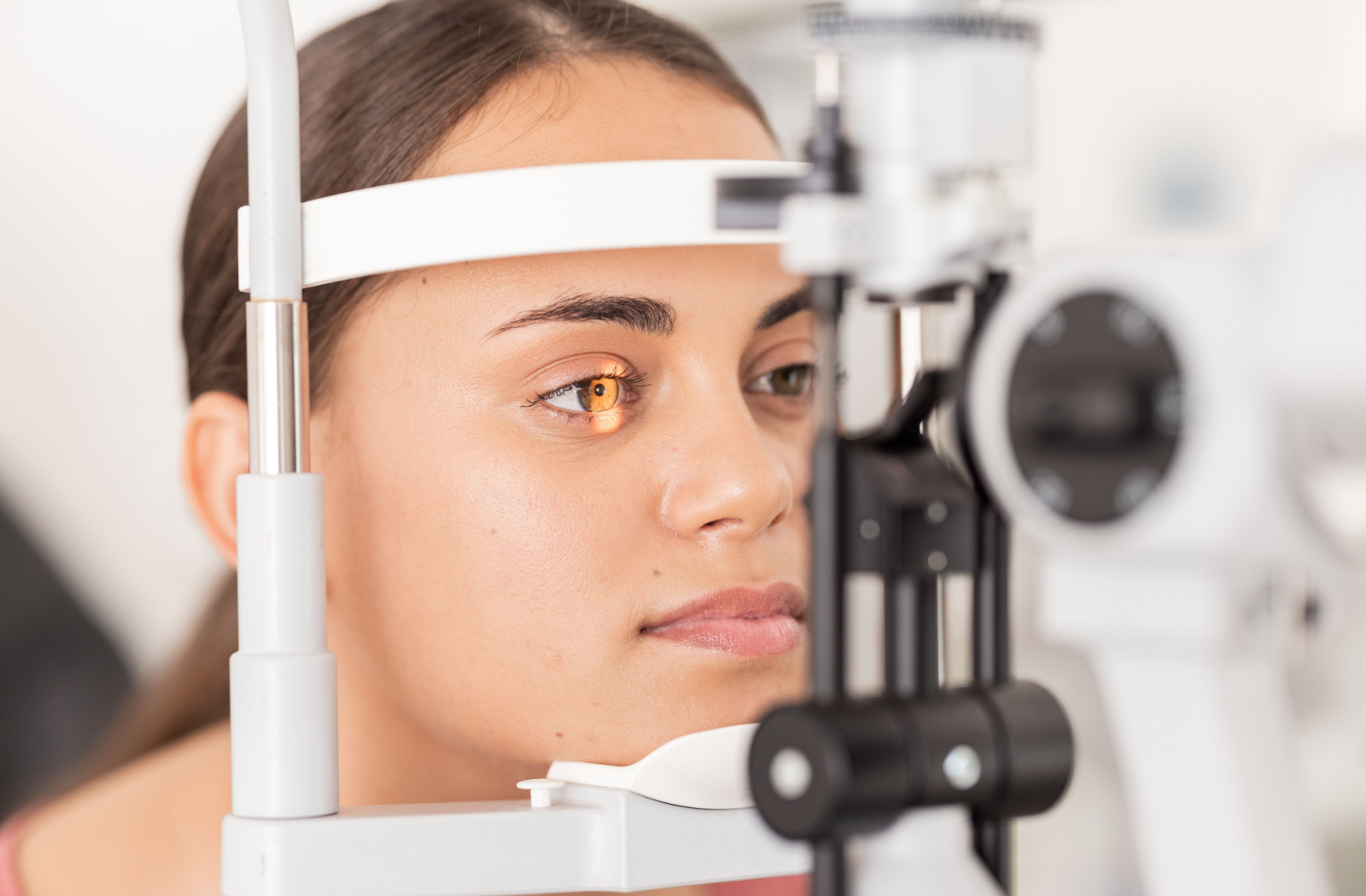
Eye Exams for Healthy Eyes & Vision
Regular eye exams are essential for good vision and eye health. Consult with your eye doctor about the frequency of eye exams, especially if you have a history of eye diseases or other medical conditions. Also, don’t wait until your next eye exam if you experience vision changes.
If your last eye exam was 12 months ago, book an appointment with Orillia Optometry today.

